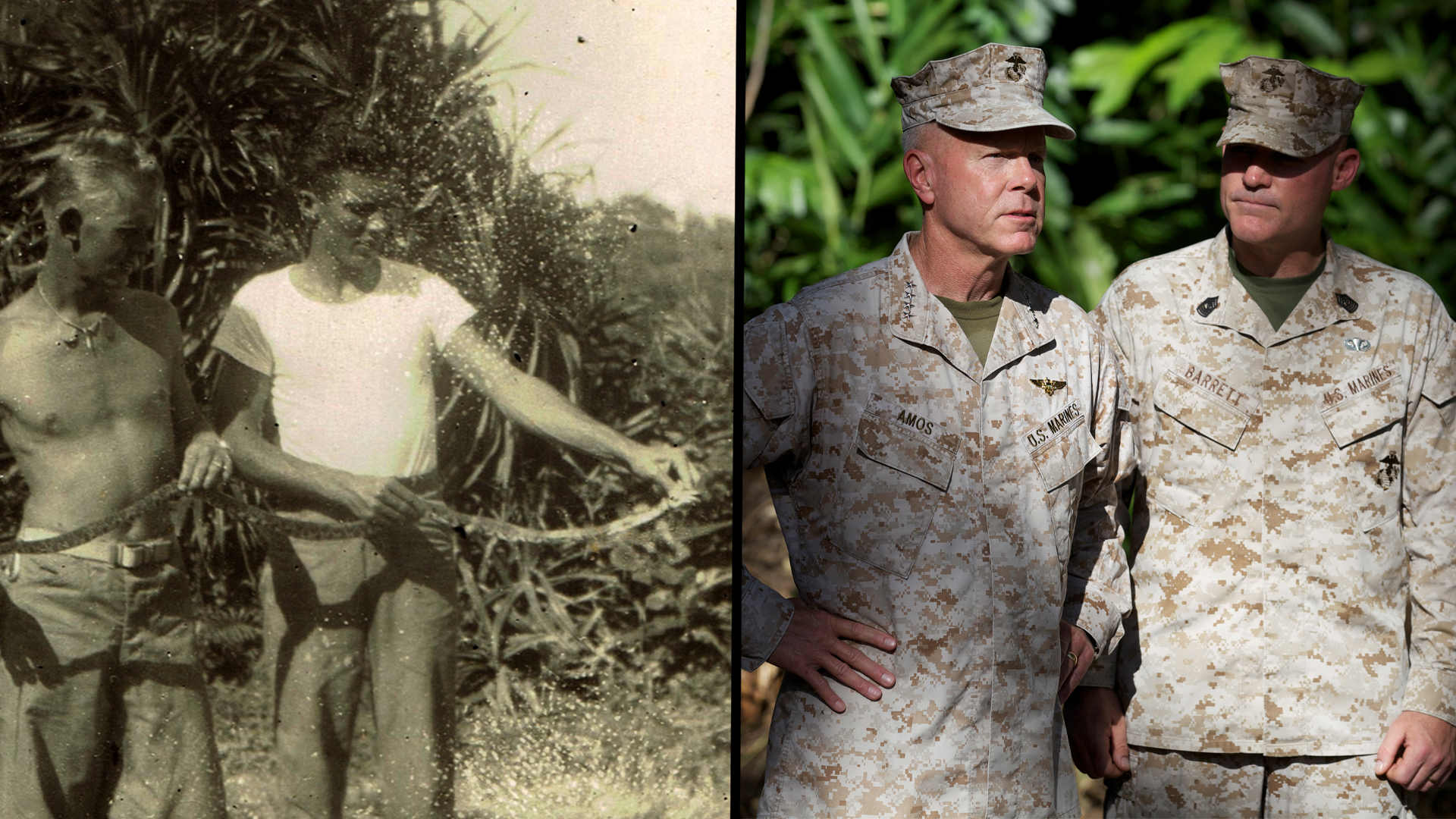
It’s been 80 years since Allied forces stormed the beaches of Normandy, even longer since the attacks on Pearl Harbor. But today, people are still wondering what’s up with the U.S. Marine Corps’ green skivvy t-shirts when the Navy and the Army had white undershirts during World War II.
While the white tee shirt grew in popularity back in the States, it was a hotly contested issue on the battlefield. It’s difficult to blend in with any background wearing a white shirt unless you’re in the Arctic. For Marines fighting in the Pacific area in 1942, white skivvy tee shirts were a bullseye for enemy forces
Starting in 1913, the U.S. Navy issued sailors three plain white tee shirts, and the Army followed suit by issuing white undershirts to soldiers. That was the standard issue for many years, but when Marines knew the color of their undershirts was getting them killed, they started dying their undershirts with more subdued colors like black, brown, and green.
Subscribe to Task & Purpose today. Get the latest military news and culture in your inbox daily.
The lessons learned on the early battlefields of WWII translated to the Marine Corps changing their standard-issue skivvies from white to a “bottle” or “sage” shade of green, commonly called “Marine Green,” in 1943. However, due to supply and production issues, the new Marine Green skivvy t-shirts were in short supply, causing a widespread issue for Marines.
The Marines have used the same idea as the standard issue green skivvy t-shirts undershirts for their Marine Corps Combat Utility Uniform, better known as cammies. It’s not the same thread and material compared to the original Marine green skivvy tee shirts but it’s similar in appearance.
Today’s undershirts have moisture-wicking and anti-microbial qualities that make them a better match for the often austere environments Marines are training and fighting in. And we think that’s pretty neat.
The latest on Task & Purpose
- Married Marines graduate from Parris Island boot camp together
- USS Carney had ‘seconds’ to respond to anti-ship ballistic missiles
- 18th Airborne Corps orders soldiers on staff duty to get some sleep
- Bud Anderson, the last World War II ‘triple ace,’ dies at 102
- Air Force general will jump from one to three stars to lead air commandos
